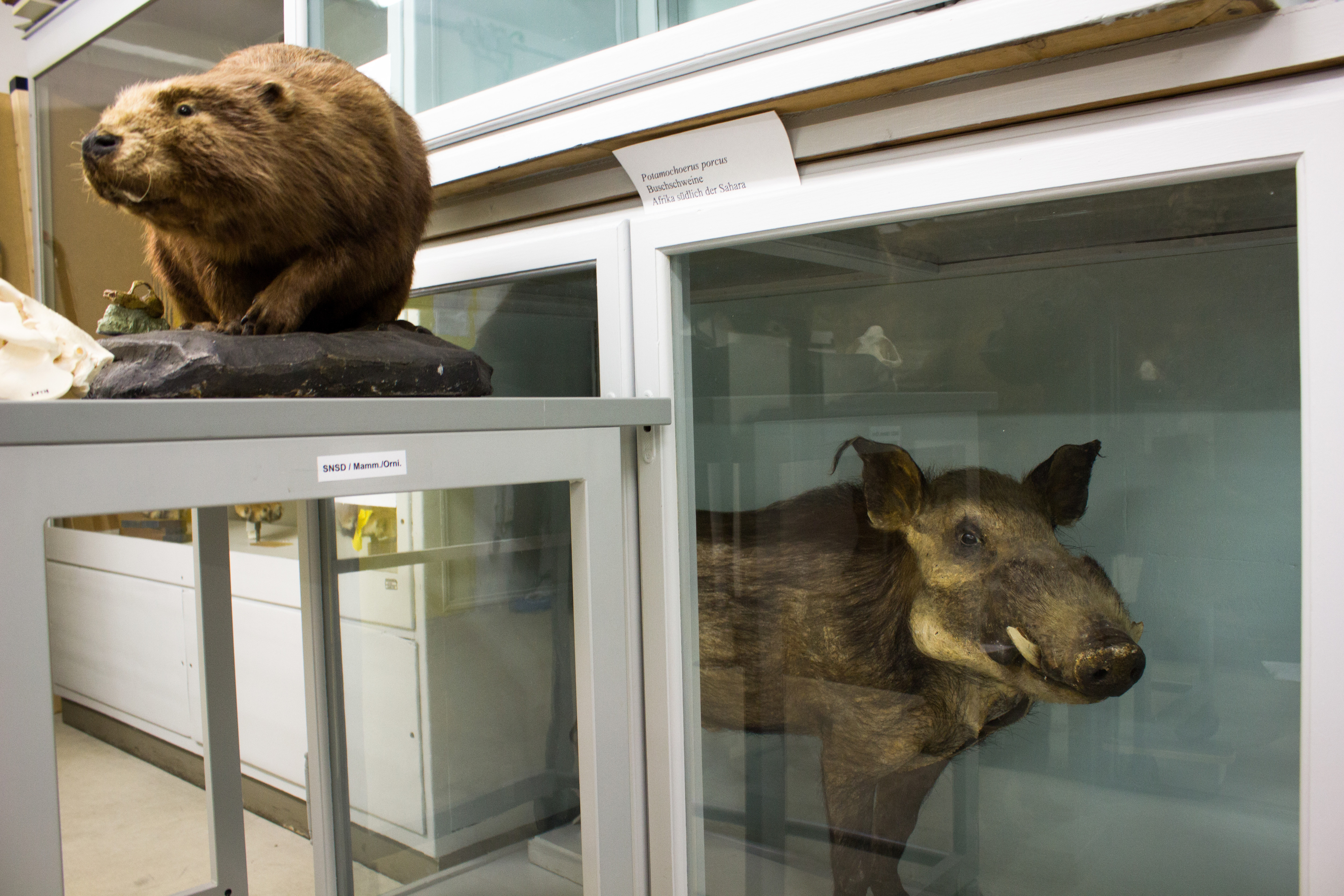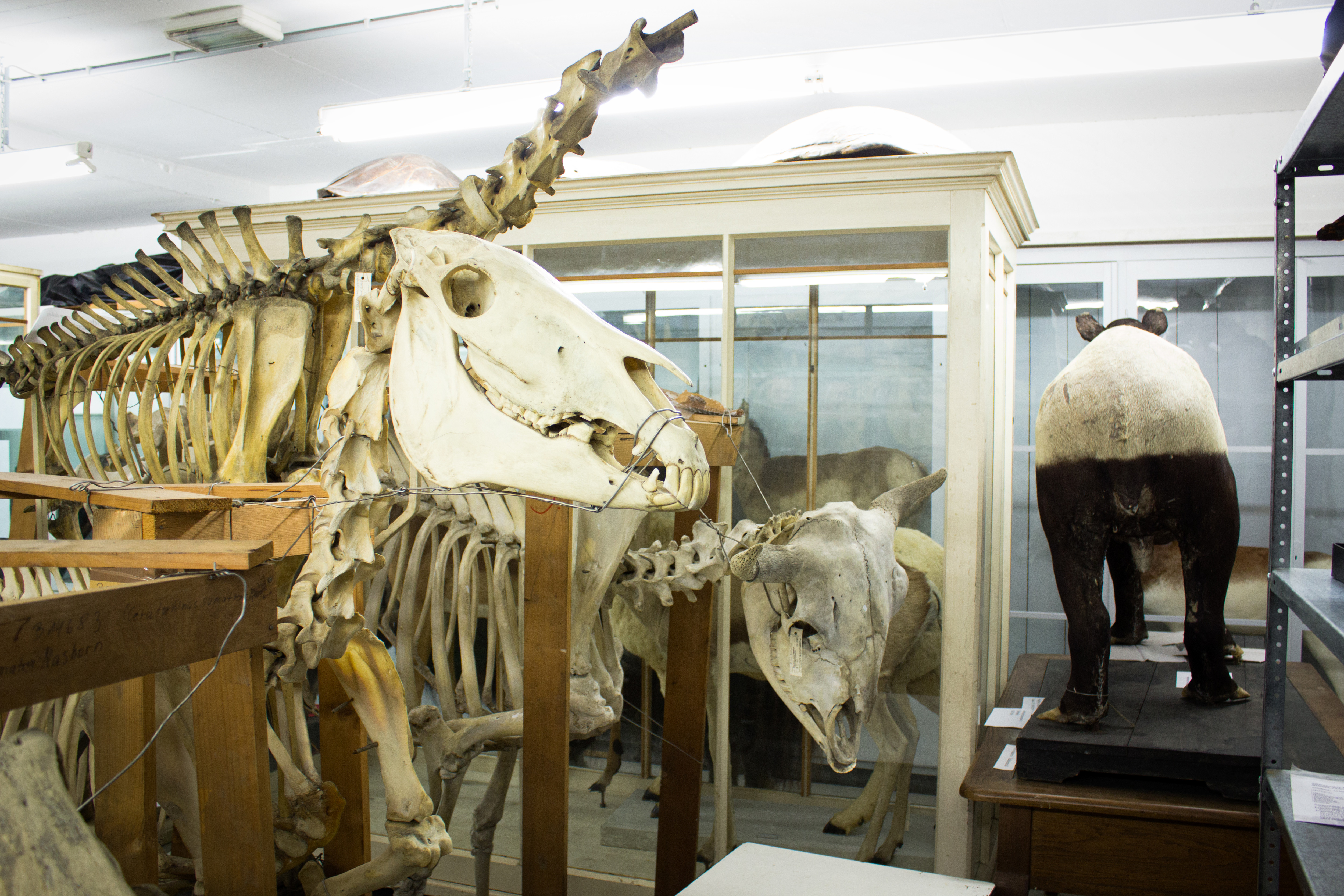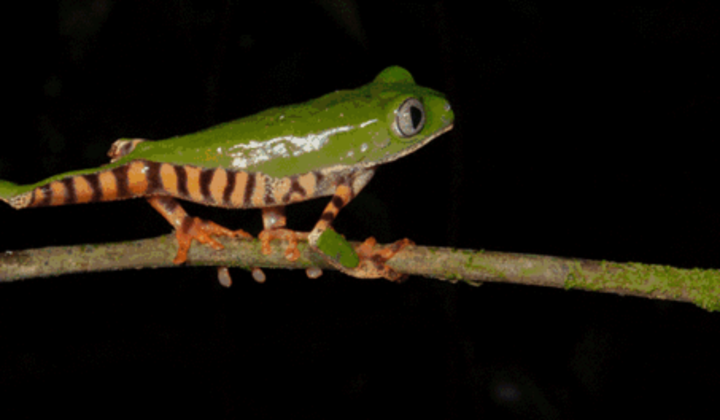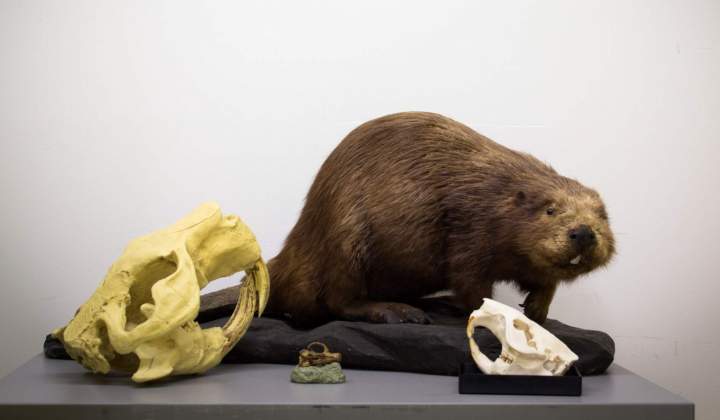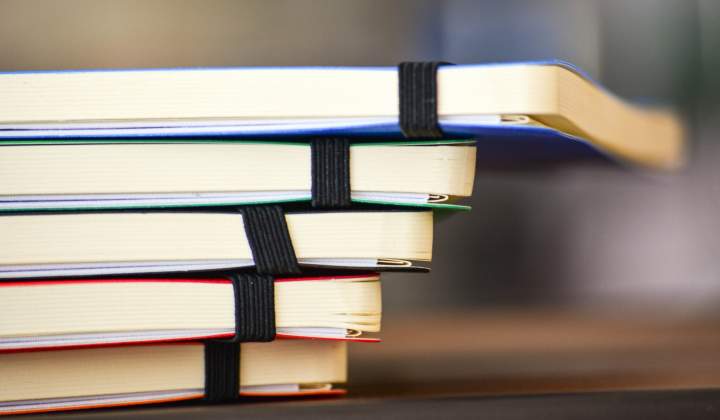Mammalogy Collection
The mammalogical collection has a long tradition. The oldest still preserved specimens are from the first half of the 19th century. The collection houses more than 26.000 specimens of more than 1.200 species, skulls, skeletons, skins, trophies and some material in alcohol.
Even though the collection has specimens from all over the world geographic focus areas are the Indo-Malayian area (based on the collection of A. B. Meyer), Afrika, mainly Angola (based on collections of A. Feiler), Eastern Europe and the local fauna of Saxonoy.
Rarities are the stuffed skin of a Tasmanian tiger (Thylacinus cynocephalus), a nearly complete skeleton of the giant sea cow (Hydrodamalis gigas) and a live-sized model of it. Some specimens of the South American collection of Pöppig are also housed in Dresden.
History of the collection
In 2010 the State Art Collection in Dresden celebrated their 450th anniversary. The Natural history collection in Dresden originate from the same source: the Kunstkammer founded in 1560 by the Saxonian Elector August (1526 – 1586). In the first inventory of 1587 the horn of a narwhal is mentioned – part of a mammal.
The founding date of the Natural History Collection is usually dated to 1728, the move of the collections to the Zwinger, built by the Elector August the Strong (1670 – 1733) and designed by Daniel Pöppelmann (1662 – 1736) as “Palais de Sciences” in 1728.
The long history of moves, fires, losses and eager collecting coined the history of the collection. In zoological perspective the Anatomical Chamber that was arranged in 1616 is worth while. It has been described to house skeletons of diverse mammals, always in pairs of male and female arranged in a kind of diorama.
In 1820 H. G. Reichenbach, was called to Dresden as Professor of Natural History and Director of the Natural History Collection. Under his long directorship lot of material was bought and expeditions were funded. His successor A. B. Meyer (1840 – 1911) had collected material in the indomalayian region – part of which is still in the mammal collection.
The history in the 20th century was overshadowed by the two world wars and associated changes of directorship and losses of material.
The development of the mammalogical colleciton is documented in the inventory started in 1874. Now there are 27.700 items inventoried.

